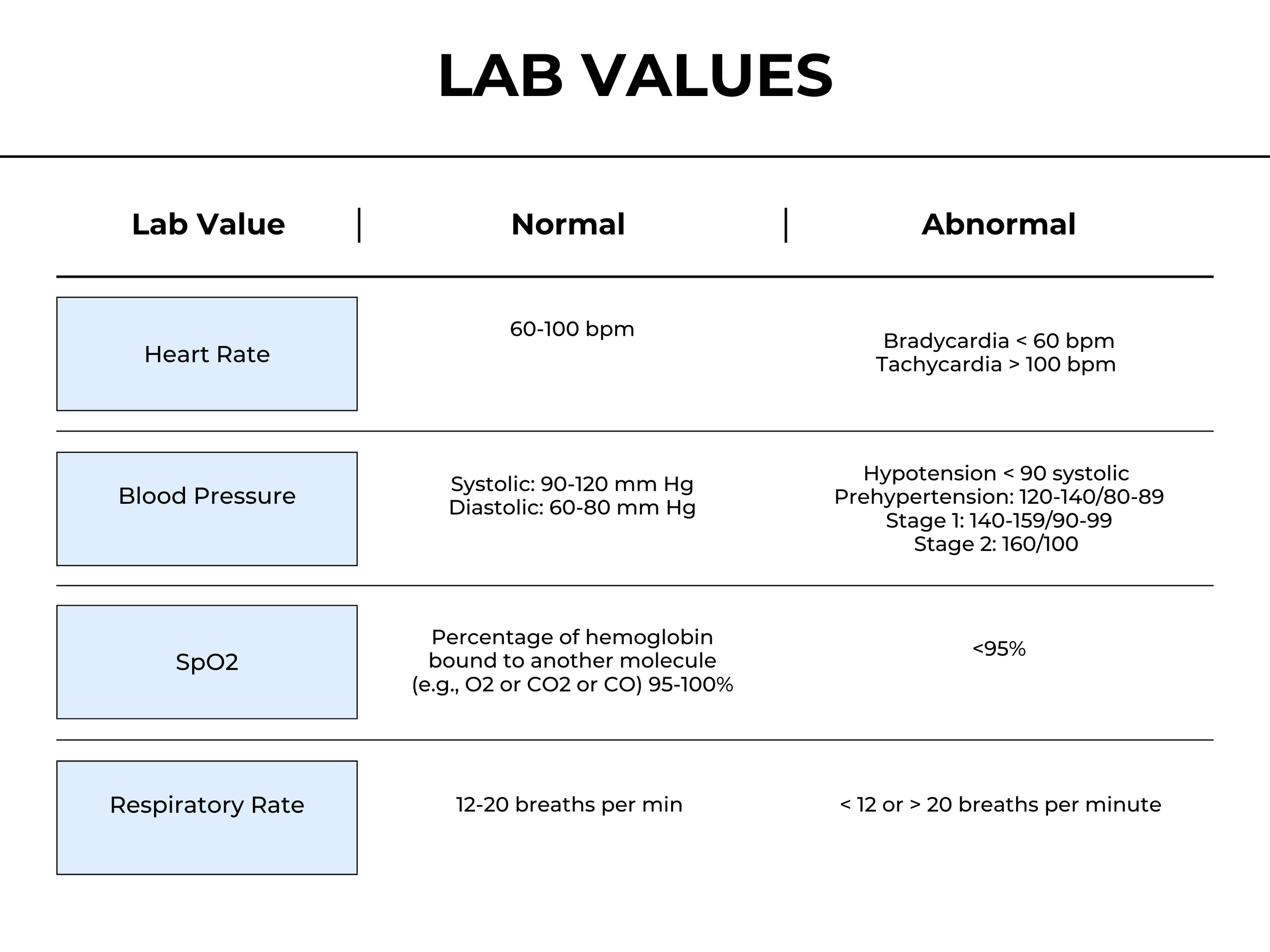 Image 1 of 1
Image 1 of 1


Vital Signs to Know as an Acute Care Occupational Therapist
As an acute care occupational therapist, understanding and monitoring vital signs is crucial to ensure patient safety and optimize therapy outcomes. Vital signs provide essential information about a patient’s current physiological status and can help identify changes that may require immediate attention.
Key Vital Signs to Monitor
Heart Rate (HR)
Normal adult range: 60–100 beats per minute (bpm)
Tachycardia (>100 bpm) or bradycardia (<60 bpm) may impact activity tolerance.
Monitor for irregular rhythms that could indicate arrhythmias.
Blood Pressure (BP)
Normal range: Systolic 90–120 mmHg, Diastolic 60–80 mmHg
Hypotension may cause dizziness or falls during therapy.
Hypertension can increase the risk of cardiovascular events.
Respiratory Rate (RR)
Normal range: 12–20 breaths per minute
Changes in respiratory rate or effort may signal respiratory distress or infection.
Oxygen Saturation (SpO2)
Normal range: 95%–100%
Levels below 90% typically require supplemental oxygen or cessation of therapy.
Temperature
Normal range: 97°F–99°F (36.1°C–37.2°C)
Fever may indicate infection and necessitates modified therapy approaches.
Why Vital Signs Matter in Acute Care OT
Patient Safety: Monitoring helps prevent complications such as falls, syncope, or cardiac events during therapy.
Therapy Planning: Vital signs inform the therapist about the patient's tolerance for activity, ensuring exercises are appropriately graded.
Early Detection: Changes in vital signs can signal deterioration or improvement, guiding ongoing treatment decisions.
As an acute care occupational therapist, understanding and monitoring vital signs is crucial to ensure patient safety and optimize therapy outcomes. Vital signs provide essential information about a patient’s current physiological status and can help identify changes that may require immediate attention.
Key Vital Signs to Monitor
Heart Rate (HR)
Normal adult range: 60–100 beats per minute (bpm)
Tachycardia (>100 bpm) or bradycardia (<60 bpm) may impact activity tolerance.
Monitor for irregular rhythms that could indicate arrhythmias.
Blood Pressure (BP)
Normal range: Systolic 90–120 mmHg, Diastolic 60–80 mmHg
Hypotension may cause dizziness or falls during therapy.
Hypertension can increase the risk of cardiovascular events.
Respiratory Rate (RR)
Normal range: 12–20 breaths per minute
Changes in respiratory rate or effort may signal respiratory distress or infection.
Oxygen Saturation (SpO2)
Normal range: 95%–100%
Levels below 90% typically require supplemental oxygen or cessation of therapy.
Temperature
Normal range: 97°F–99°F (36.1°C–37.2°C)
Fever may indicate infection and necessitates modified therapy approaches.
Why Vital Signs Matter in Acute Care OT
Patient Safety: Monitoring helps prevent complications such as falls, syncope, or cardiac events during therapy.
Therapy Planning: Vital signs inform the therapist about the patient's tolerance for activity, ensuring exercises are appropriately graded.
Early Detection: Changes in vital signs can signal deterioration or improvement, guiding ongoing treatment decisions.
